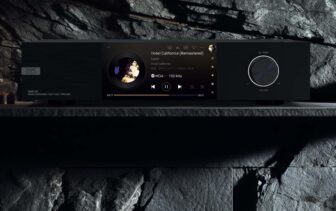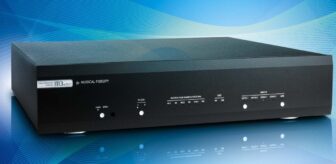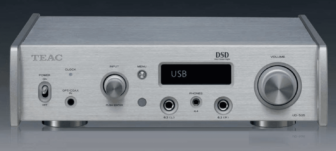EARMEN TRADUTTO Review: Gained In Translation
Martin Pipe goes from digital to analog with Earmen’s full metal-jacketed Tradutto DAC.
The Earmen Tradutto is a miniature (150x30x150mm) ‘wall-wart’ powered hi-res DAC that covers all bases with a USB port for computer audio, conventional coaxial/ optical inputs, and HD Bluetooth capabilities. Its stereo output is available on phono sockets and, should balanced connectivity be required, a 4.4mm TRRRS (Tip/ Ring/Ring/Ring/Sleeve) 5-pole jack, likely a Pentacon. No headphone amplifier is built in, and as the outputs are ‘fixed’ in level – no volume control here – the unit should be used as a source with conventional gear.

The build quality is excellent, and the Tradutto’s machined enclosure contributes to a reassuring heaviness of 550g, which belies its size. Earmen tells us that the electronics inside are fully balanced and mounted on a gold-plated PCB.
TheTradutto is designed around an ES9038Q2M Sabre32 DAC, a low-power version of ESS’s flagship 9038 device, and a 16-core XMOS XU216 chip that looks after hardware decoding and the USB interface.
Given that its manufacturer seems to be based in Chicago, I found it unusual that the Tradutto- derived from the Italian for ‘translator’, if you didn’t know- bears a ‘made in Europe’ notice on its rear panel. So, too, does the accompanying remote, a tiny aluminum-encased device that’s charged via USB-C (you don’t get a charger or cable, so use your mobile’s). Neat and clever.
It turns out that ‘Earmen, LLC’ is a DAC-focused US offshoot of Serbian operation Auris Audio, an esoteric tonearm and valve-amp specialist founded by MilomirTrosic. It, therefore, wouldn’t surprise me if the physical location of the European factory responsible for Earmen products is closer to Serbia than Italy. This truly is a hi-fi world!
Dominating theTradutto’s front panel is an OLED display that indicates the source selected by a pair of buttons to its right and the status of Bluetooth pairing. If you’re listening to a USB source, information about the incoming signal – PCM resolution and sampling rate, for example – is displayed. Such information isn’t available for the other inputs, which is a pity because it can aid in troubleshooting.
Unless unplugged, the Tradutto will remember the last used input (it defaults to USB). Furthermore, the inputs are not cyclically selected, so perhaps it is just as well that there are only four! The remaining two buttons on the front panel (duplicated with the others on the remote) invoke Bluetooth pairing and standby mode. The ES9038Q2M supports customizable digital filter characteristics, but Earmen does not use them here.
It’s also disappointing that the manual does not cover computer-based USB setup anywhere near the depth required. All it does is point out that Windows users must install a driver for the best results. This XMOS driver is essential for hi-res PCM (as high as 384kHz/32-bit), DSD (up to DSD512 is supported), and MQA, which – thanks to the processing power inside that XMOS chip – the theTradutto will also decode. Good news for Tidal subscribers! Without such software, though, it’s 48kHz PCM only. A driver download and support information should be added to the relevant Earmen web page (bit.ly/3HMSv9f) as soon as possible; it is, however, buried at the bottom of another.
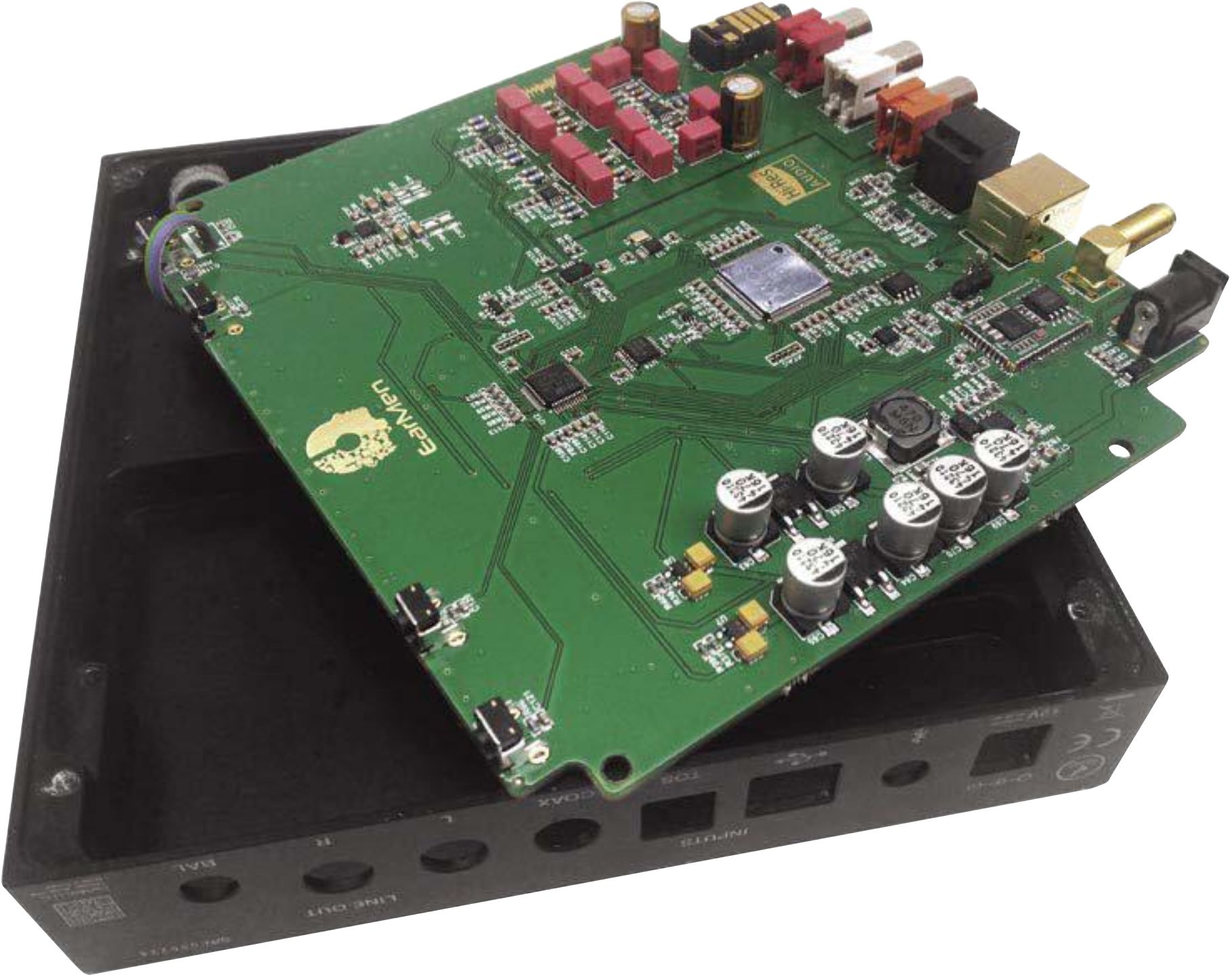
Internally, the Tradutto is neatly constructed on a gold-plated PCB. The XMOS chip – heatsinked by the machined case – can be seen. Barely visible, though, is the tiny ES9038Q2M Sabre32 DAC chip.
Earmen site (bit.ly/3rOTfW6) that is ranked lower on Google! Furthermore, Earmen is advised to append a meaningful USB configuration section to the manual and publish suitable instructions on its website(s). I chanced on the driver (EarMen_Win-l.rar) via a Thai review website rather than Earmen’s own, but users shouldn’t have to go to so much trouble. I alerted the Tradutto’s UK distributor (SCV) to my findings.
I used the Tradutto with a selection of equipment. This included an iFi Pro iCan Signature driving Focal Utopia headphones and a Cambridge Edge NQ/W combo with Quadral Aurum Wotan VIII speakers. The NQ and iCan support balanced inputs, but unfortunately, the 4.4mm-to-XLR cable I ordered didn’t arrive in time for this review, so I had to stick with the RCAs. Other sources included a Humax digital TV set-top box with optical output, an old Sony DVD player (used here as a CD transport), a Sony Nexperia 10 smartphone, and a cheap Mahdi MP3 player. The latter two devices, which suffer from terrible analog outputs, connected to the Tradutto wirelessly via Bluetooth. Their worst sonic limitations were bypassed, although the sub-£ Mahdi sounded thin and uninvolving.
In contrast, the Sony was considerably fuller and more musical in character. I suspect this was due in at least part to a Bluetooth connection that the phone’s Android operating system revealed to be aptX HD. I don’t know how the Mahdi player communicated with the Tradutto, which demonstrates how useful a more communicative front-panel display would be! TV sound was also transformed via the Tradutto, BBC Four music programs, and Radio 3, which were particularly beneficial.
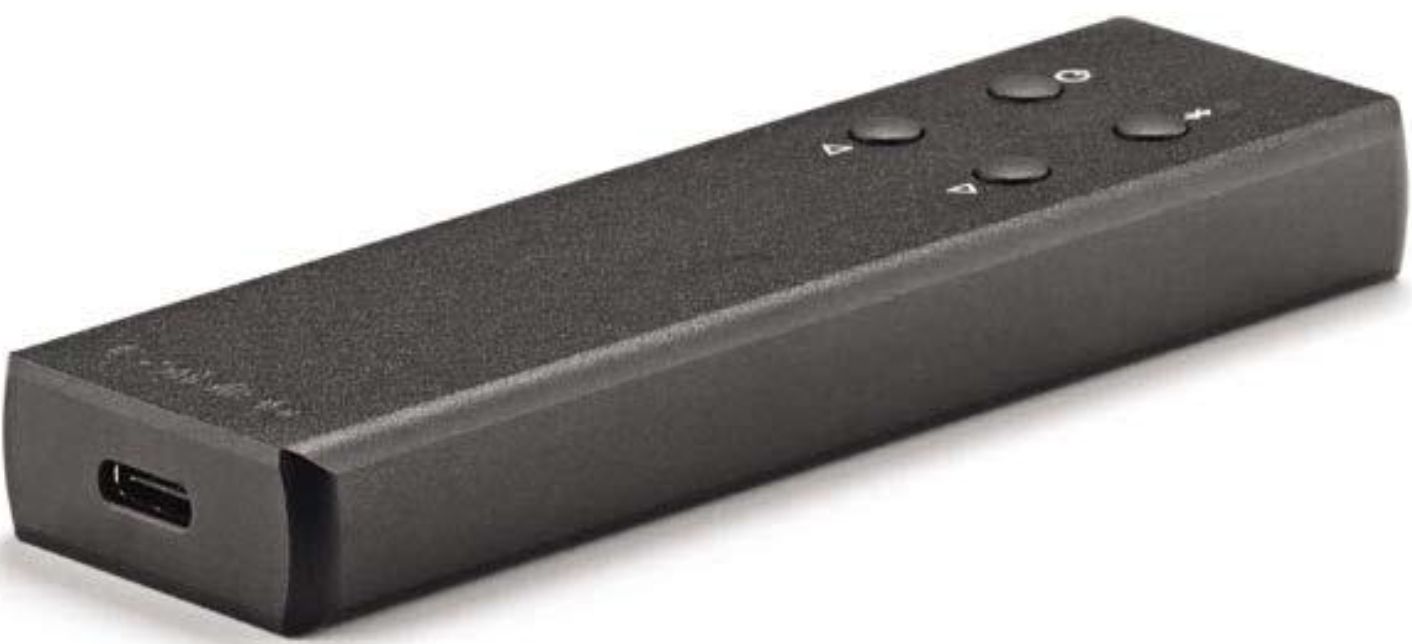
And so to albums, played with the Sony optical transport or Windows PC. Coming across particularly well was the plaintive pedal steel guitar of Mojave 3’s dreamy alt-country Starlite #I. With the theramin and understated vocal, this cannot help but draw you into the piece’s intimate melancholy. With the Tradutto, I found that the BBC session version aired now and again on 6 Music is clearer and more open than the recording on the ‘Spoon and Rafter’ album.
More uptempo electronic percussion, piano, and analog synths – Caribou’s Never Come Back (from 2020’s Suddenly) – gave a good account of itself in terms of pacing, although I perceived a definite ‘edge’ to upper percussion, relative to DACs I’m familiar with – Prism’s Callia, for example. As a result, there’s a ‘forward’ presentation; overall, though, the Tradutto is tonally-neutral. I’m also impressed with the levels of detail that theTradutto can communicate without being over-analytical (a definite trait of the aforementioned Callia). It was able to, for example, resolve the complex (and hyper-fast!) layers of jungle/drum-and-bass percussion that dominates Pearl’s Girl, which you’ll find on Underworld’s Second Toughest in the Infants album. And despite the heavy electronic processing of the vocal, every word of Karl Hyde’s stream-of-consciousness lyrics is intelligible.


CONCLUSION
Overall, the Earmen Tradutto is a likable little DAC and is worth considering if you’re short of space. Coming across as more musical than analytical, it doesn’t fall short regarding resolution.
It’s a pity that Earmen didn’t make more use of the front-panel display, and we hope that a firmware update can fix this. Something that Earmen should do straight away, though, is help computer-reliant users unlock the full potential of the USB interface.
MEASURED PERFORMANCE
With 192kHz sample rate PCM frequency response extended ruler flat to 91kHz (-1dB) our analysis shows, before plunging in brick-wall fashion to the 96kHz upper theoretical limit. This is a fast, multi-tap high-order filter – unlike most that roll off slowly above 30kHz. The time domain impulse response will differ, which may give a slightly harder, faster character to the musical presentation.
Our analysis shows that distortion measured 0.029% at -60dB, due mainly to a little phase noise rather than discrete distortion harmonics. With values of 0.02% or so achieved by top DACs from ESS, AKM, and Chord Electronics in other devices, this is a result with the best. Output at 0dB was 2V, as per Philips original Red Book CD Standard.
Low noise and distortion contributed to a high EIAJ Dynamic Range value of 117dB, as our analysis shows (57dB + 60dB), fully enough to make the most of hi-res music files, if not up to the 120+dB figures being reached in other DACs, mostly those with an output swing of 3V or more to keep signal above the noise floor of the output amplifiers.
The Tradutto measured well all round and had some unusual characteristics.



VERDICT
When you purchase through links on our site, I may earn an affiliate commission. Here’s how it works.
SCV (UK distributor)
+44 (0)3301 222 500






